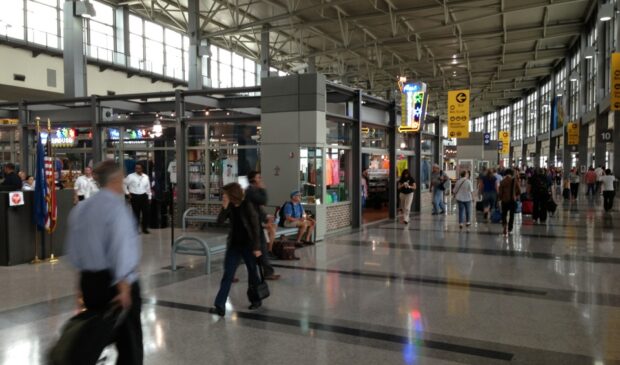Panelists look at the airport’s future of ‘perpetual’ construction
Thursday, April 24, 2025 by
Chad Swiatecki Austin-Bergstrom International Airport is expected to remain in a near-perpetual state of construction for the next several decades, as city officials and regional leaders prepare for sustained, long-term growth in air travel demand and economic activity across the Central Texas region. That projection, shared during a recent Urban Land Institute of Austin panel, helped the area’s real estate and development professionals grasp the infrastructure investment already underway, and the airport’s critical role as a hub for regional development
Originally designed for 11 million annual passengers, the airport has already surpassed 22 million travelers per year to more than double its capacity ahead of schedule. The expansion plan includes a phased construction of multiple new concourses and major upgrades to existing facilities, aims to position Austin to eventually handle between 75 and 80 million annual passengers.
The current phase will create a second concourse that is parallel to the Barbara Jordan Terminal. That terminal is expected to increase capacity to more than 30 million passengers by 2040. Subsequent concourses will be added as needed in response to demand and funding availability.
“It’s a delicate balancing act of: How do you finance it? How do you build it? How do you operate it at the same time? The need is there, the demand is there. And when you look at our peer communities, we have to mark ourselves against smaller rapid growth communities, Nashville being key among that list,” said Jeremy Martin, president of the Austin Chamber of Commerce. “When you look at where Austin is going to be in the next five, 10, 20 years, it is those global destinations and global hubs that are served by multiple large airlines.”
Funding for the nearly $4 billion project will primarily come from municipal bonds and contributions from the airlines that operate at the airport, with new fee structures and agreements currently under negotiation. While construction will be ongoing, officials noted that flight volumes are not expected to decrease because of temporary facilities and staged, scheduled prioritizing overnight work.
Access to the airport from surrounding areas is also being addressed. City and regional transportation agencies have preserved right-of-way for a future commuter rail extension, and ongoing roadway improvements on nearby highways to support more reliable ground transportation. These efforts are being coordinated through long-range regional planning processes such as CAMPO 2050, which aims to align the airport’s needs with broader transportation infrastructure across Central Texas.
“It’s an expectation for our global visitors that they have smooth connectivity… Especially over the last 15 years with the emergence of Formula One and all the activity at Circuit of the Americas (and) the rapid growth that South by Southwest has had,” said Shane Harbinson, chief development officer for Austin Aviation. “Having that connectivity is key, because our competitors have it and we’re playing catch up.”
Harbinson said other planned improvements include upgrades to the west runway system that was originally built for military aircraft and new, parallel taxiways to support long-haul and international service. The airport’s layout is being optimized to facilitate efficient gate access and aircraft movement, a feature that officials say gives Austin a competitive advantage over other midsized airports with more constrained designs.
Beyond capacity and connectivity, the discussion also touched on efforts to preserve the airport’s sense of place and alignment with Austin’s values. Sustainability features including reclaimed water systems, energy-efficient design, solar readiness, and thermal storage, are being integrated into the expansion. Placemaking elements like live music, local dining, and public art are also being preserved and enhanced to ensure that passengers experience a “uniquely Austin” environment.
“I mentioned a little earlier about municipal bonds and that we financed the airport through financing based on the revenues of the airport… versus doing a (public/private partnership) where you would have some huge company come in, build a new concourse, run the new concourse, and we would just make a payment to that company to have the new facility,” said Dennis Waley, managing director of financial consultants PFM Advisors. “What you lose when you go that direction is the Austin vibe, because you’re going to have more of the national chains. You’re going to have somebody who’s running it to make a profit because that’s what they’re there to do. And it will cost more, so you have to balance: Do you want that feel and that smell of local barbecue or do you want a different type of product?”
Photo made available through a Creative Commons license.
The Austin Monitor’s work is made possible by donations from the community. Though our reporting covers donors from time to time, we are careful to keep business and editorial efforts separate while maintaining transparency. A complete list of donors is available here, and our code of ethics is explained here.
You're a community leader
And we’re honored you look to us for serious, in-depth news. You know a strong community needs local and dedicated watchdog reporting. We’re here for you and that won’t change. Now will you take the powerful next step and support our nonprofit news organization?


